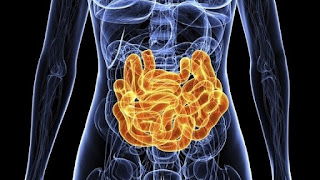Health is the most
precious blessing from the Almighty Allah. Everyone should take care of it. In
Pakistan, many diseases that have been eradicated from most parts of the world
still exist. Unfavorable climatic conditions invite different diseases. Furthermore,
a lack of educational, financial and economic development is also a leading
cause. According to the World Health Organization (WHO), Pakistan ranks at
122 out of 190 countries in terms of health care standards. Following are the 10
most common diseases in Pakistan that we all need to be conscious.
Malaria, dengue fever and
yellow fever are the three most common mosquito borne diseases that occur in
Pakistan. Malaria arises when female mosquitoes transmit parasites in the liver
and start attack red blood cells. Symptoms of malaria are severe chills, sweats
and high fever. Dengue fever is a severe form of virus that causes
migraines, chills and loss of strength and appetite. It should be treated on
time otherwise it can be lethal. However, yellow fever is perhaps the most
severe form of mosquito-borne diseases. It causes viral infection of the
respiratory passages. Hepatitis or hemorrhagic fever may occur in case of
severe fever.
One of the most deadly type of diseases in Pakistan
is Ischemic or coronary heart disease. Ischemia means a "reduced blood supply". It is a condition that affects the supply of
blood to the heart. Cholesterol deposited in the blood vessels and it gets
narrowed or blocked. This decreases the supply of oxygen and nutrients to the
heart muscles, which is essential for proper functioning of the heart. As the
heart is the pump that supplies oxygenated blood to the various organs, any
defect in the heart immediately affects the supply of oxygen to the vital
organs like the brain, kidneys, liver, etc. This leads to the death of tissue
within these organs and their eventual failure.
There
are bacteria everywhere around us and in infinite quantities. Most bacteria that live in our cells are good bacteria, that
are beneficial for the body. But only some can cause deadly diseases, if not
cured in time. Tetanus, typhoid fever, cholera, pneumonia and tuberculosis are the most common bacterial diseases. The
bacterium can be taken from infected animals or their products (skin, wool and
meat). It can enter the human body through the intestines (ingestion), lungs
(inhalation), or skin (cutaneous).
Viruses are almost always dangerous and harder to
treat due to their tiny size.
Viral diseases include viral hepatitis, mumps,
rabies, measles, chicken pox, and many more. Hepatitis A and E are most common
in Pakistan. Furthermore, viruses can turn fully functional cells into
cancerous cells. They target cells in the blood, liver and respiratory system.
Hepatitis A is
a viral disease spreads through contaminated water or unhealthy food. Its
symptoms include fever, jaundice and diarrhea and it deteriorates the liver
functions. Hepatitis E is another viral disease, also affecting the
liver functions. Contaminated water is its primary cause for spreading.
Furthermore, it may upset the urinary tract as well as display other symptoms
such as jaundice or fatigue.
TB is caused by
the bacterium Mycobacterium tuberculosis. It is spread through
the air when a person with TB (whose lungs are affected) coughs, sneezes,
spits, laughs, or talks. Unfortunately Pakistan
ranks 8 out of the 22 countries in the world that are most highly susceptible
to tuberculosis, according to WHO. Tuberculosis can occur in the pulmonary (lungs),
respiratory, central nervous system, brain (meningitis), as well as bones,
joints and other organs.
Cancer is also one of the leading causes of death in
Pakistan, representing
8% of all deaths. Lung cancer and breast cancer
are the two most common types of cancer in Pakistan. Majority of Pakistan’s
cancer patients do not have access to proper treatment. In cancer, cells of the
body start dividing uncontrollably and are less differentiated. It can be
malignant as well as benign.
Diabetes occurs when
the body becomes incapable of producing insulin
or lack of responsiveness of the cells to insulin. It results in
low metabolism and high glucose levels in the blood and urine. Pakistan has the
highest diabetes rates in all of South Asia, with as many as
7 million people
affected by the disease.
If proper measures for awareness and
treatment are not adopted, Pakistan may have eighth highest population of
diabetic patients by 2040.
\
A
stroke is when blood flow to the brain is disrupted.
There are usually two types of strokes, ischemic and hemorrhage. Ischemic
is when a blood vessel or artery is blocked by blood clotting and is not
capable to reach the brain. Hemorrhage results in internal bleeding of the
brain due to rupture of a brain blood vessel. It is a major cause of death in
Pakistan.
Infection is the most common form of disease in
Pakistan, since it occurs on the basis of co-infection. Contamination, poor
sanitation, fewer resources and lack of medication are the main factors behind
infection. The fact that Pakistan is still a developing country does not do
much to help either. Additionally, intestinal infections include cholera,
typhoid fever, dysentery, food poisoning and diarrhea among others.













No comments:
Post a Comment